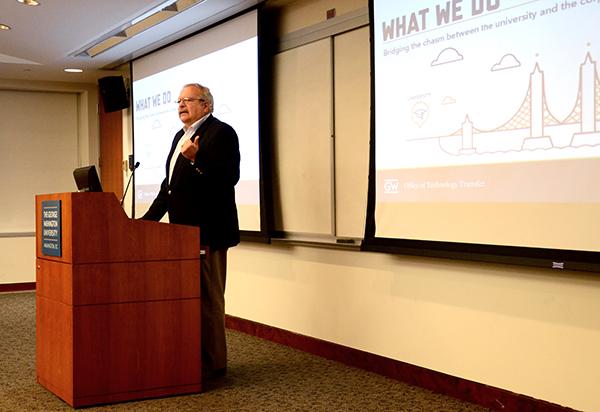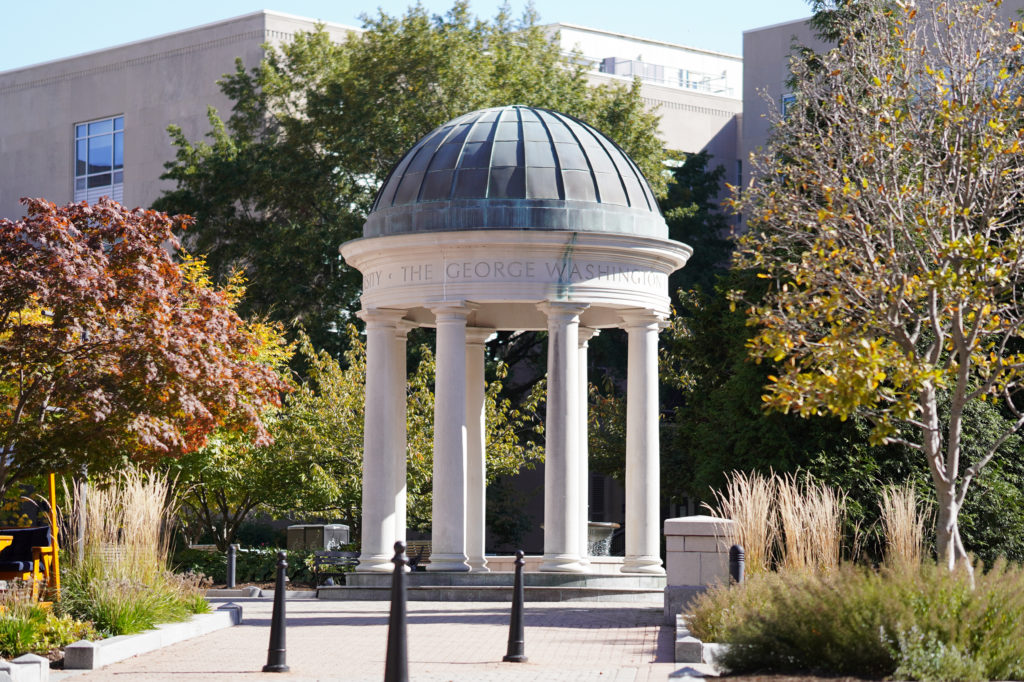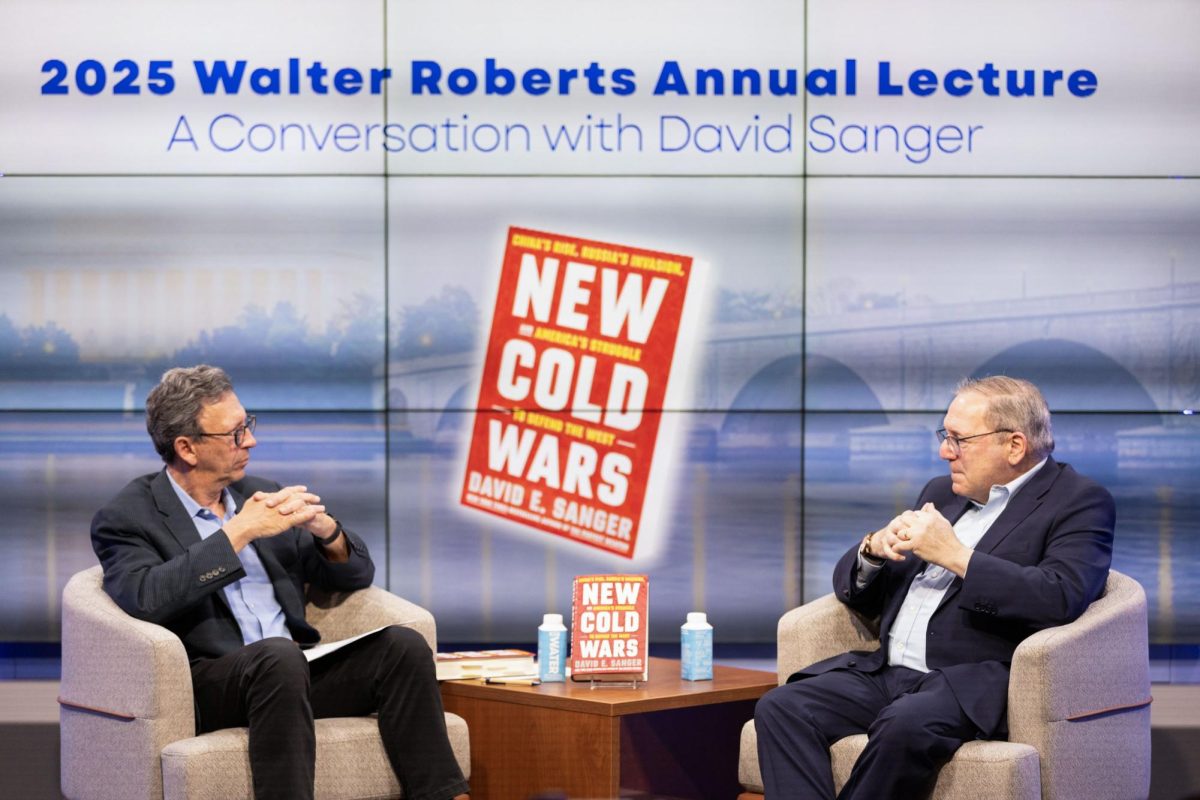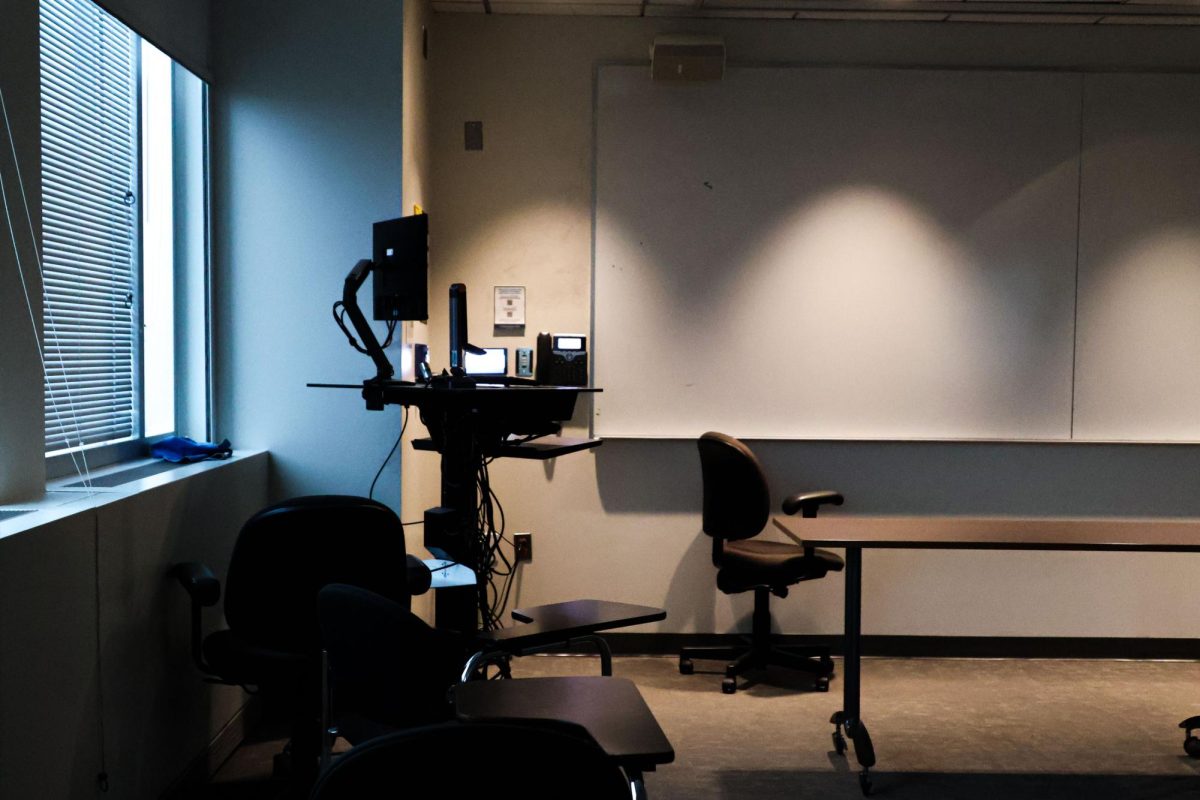GW is looking to bring products created within its walls to a store near you.
From golf ball designs to water quality analysis, faculty have put their research to the test, seeing if it can be sold, licensed or even used to launch their own companies. And now that more researchers will be able to use the National Science Foundation’s Innovation Corps, inventions designed on campus could soon be fast-tracked to the market.
The I-Corps helps researchers decide whether their work is worth commercializing. Faculty meet staff with experience in the industry to discuss their technology, determining whether there’s a niche for their work in the marketplace, and the process of bringing it to consumers.
But because the typical six-week program has been too much of a time commitment for many, the regional D.C. I-Corps will offer a two-week version later this month.
Jim Chung, executive director of the Office of Entrepreneurship, said GW houses one of the largest groups of researchers that participates in I-Corps programs, and the workshops can introduce faculty and students to the idea of commercializing their work.
Sixteen faculty members and 18 students have participated in the program so far.
“The idea here is that it’s hard for industry to really understand basic research, or the research going on at universities,” he said. “It’s too much to expect the industry folks to recruit at universities, so we try to take more of a push approach.”
Chung said faculty who go through the program will be able to decide if their technology is ready to be licensed, if they should launch their own company or if their product needs more work.
Many of the students who participate in teams with their professors are working toward master’s or doctoral degrees, and they can find options for a career outside of academia through the workshop, he said.
Chung added that marketing more of its research would help GW reach its goal of competing with the top research institutions across the country.
“If you think about the universities best known for their science and technology and research, Stanford and MIT always come to mind,” he said. “There’s a lot of other really great science and technical universities out there, but most people hear about Stanford and MIT because they commercialize a lot of their research.”
Jesse Pines, a professor of emergency medicine and health, said he approached Chung about a year ago with the idea of starting a company that would make scheduling more efficient for emergency medicine physicians. Chung encouraged Pines and associate professor of engineering management and systems engineering Hernan Abeledo to go through the I-Corps.
Pines and Abeledo found that their idea wasn’t ready to bring to the market, but they are continuing research on the topic. The two professors were able to participate in a process called “customer discovery,” in which issues with hospital scheduling were broadly discussed.
“Through this process, we realized that improving scheduling to improve patient flow was not the ‘hair on fire’ issue that we had initially thought it was,” Pines said.
And even though his idea might not be fit for commercialization, he said researchers at GW who think their ideas could be profitable should explore the I-Corps.
“I finished my MBA, which I did in medical school, nearly 15 years ago and ‘customer discovery’ was not something that was taught back then,” Pines said. “For GW students, medical residents and faculty, the I-Corps program is one of those hidden gems on campus.”
GW is also updating both its patent and copyright policies this year, which could encourage more faculty and students to capitalize on their inventions.
Steve Kubisen, the director of the Office of Technology Transfer, said his office has looked to make it easier for faculty to file patents for their research or launch a startup by changing the law firms the University uses to file patents and connecting researchers with local entrepreneurs.
He said his office reaches out to faculty across campus and presents options to them for how they might capitalize on research they may not have thought could be commercialized.
“Thirty percent of our new inventors are referrals,” Kubisen said. “You work with somebody, they see we’re helpful and they tell their other faculty members. And that’s the strongest way to build relationships.”







